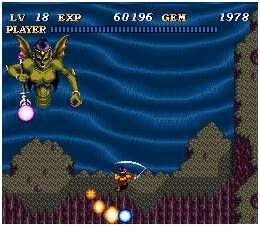
Before they were known for the Disgaea series, Nippon Ichi Software developed a puzzle video game for the PlayStation back in 1996. Jigsaw Madness was published in the USA by budget publisher XS Games in 2002 and when I say it’s a puzzle game, I literally mean you put together jigsaw puzzles.
In regular old jigsaw mode I tried completing puzzles as fast as I could, with the help of up to three other players, if I had a multi-tap… and three other people who wanted to play a jigsaw video game. There were plenty of puzzles, 150 to be exact so should someone be seriously interested in this game, there’s ample content. Most of the puzzles I played seemed fitting with the theme of puzzle design: they had a lot of colors and plenty of objects.
Besides the puzzle itself, I had many options that affected the difficulty of the puzzles. Most importantly I could decide on how many pieces that puzzle should be comprised of: 24 pieces, 96 pieces, or 150 pieces; naturally the more pieces, the longer the puzzle took. I could also choose whether the pieces were in the correct position or if I had to rotate them. Another option that amped up the difficulty was if I wanted to view the puzzle piece outlines on the uncompleted puzzle.

The reason I pulled this game off the shelf however was to try it out with a friend; but I couldn’t find two others or a multi-tap, dang. We played a handful of rounds of the game’s competitive multiplayer. There are two modes and they’re only available for two players. In the first mode we tried to complete three puzzles faster than our opponent, simple enough. The second mode was a little more challenging; we attempted to capture more puzzle pieces than the other guy. To capture pieces we had to surround them, and the results from this mode were always up in the air until the end.
One very cool thing about the multiplayer was the items we could use. With each puzzle piece we placed correctly, we’d fill up a bar on the screen. As it filled up more items became available to use. There were a few dastardly items too. Reversing our opponent’s controls, speeding up their controls, blacking out the images on the pieces; depending on which side of the item we were on, it was frustrating or hilarious.

I’m not really sure what the appeal of a jigsaw video game is (or was) but for what it’s worth, Jigsaw Madness is a good game. There’s plenty of content there for those who are interested, but playing with a friend is where it’s at. Whether you’re working together or against each other, it’s a unique video game experience.
3/5













